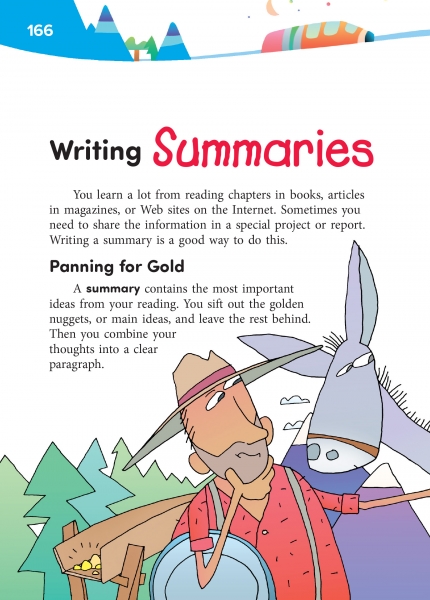Page 166 from

Start-Up Activity
Bring in clippings of summaries. They might be movie plot summaries, back-cover copy for novels, chapter introductions in textbooks, TV listings, or concert notes. Read and discuss them with your students. Ask, "What is the purpose of a summary?" Among the answers, students may say that a summary lets you quickly "get a taste" for something to decide if you want to experience the whole thing.
Let students know summaries also help the writer truly understand the subject. Tell your class they will be writing their own summaries, not just for readers, but for themselves.
Think About It
“When a reader speaks or writes about a text, a new text is being produced.”
—Louise Rosenblatt

Start-Up Activity
Bring in clippings of summaries. They might be movie plot summaries, back-cover copy for novels, chapter introductions in textbooks, TV listings, or concert notes. Read and discuss them with your students. Ask, "What is the purpose of a summary?" Among the answers, students may say that a summary lets you quickly "get a taste" for something to decide if you want to experience the whole thing.
Let students know summaries also help the writer truly understand the subject. Tell your class they will be writing their own summaries, not just for readers, but for themselves.
Think About It
“When a reader speaks or writes about a text, a new text is being produced.”
—Louise Rosenblatt
